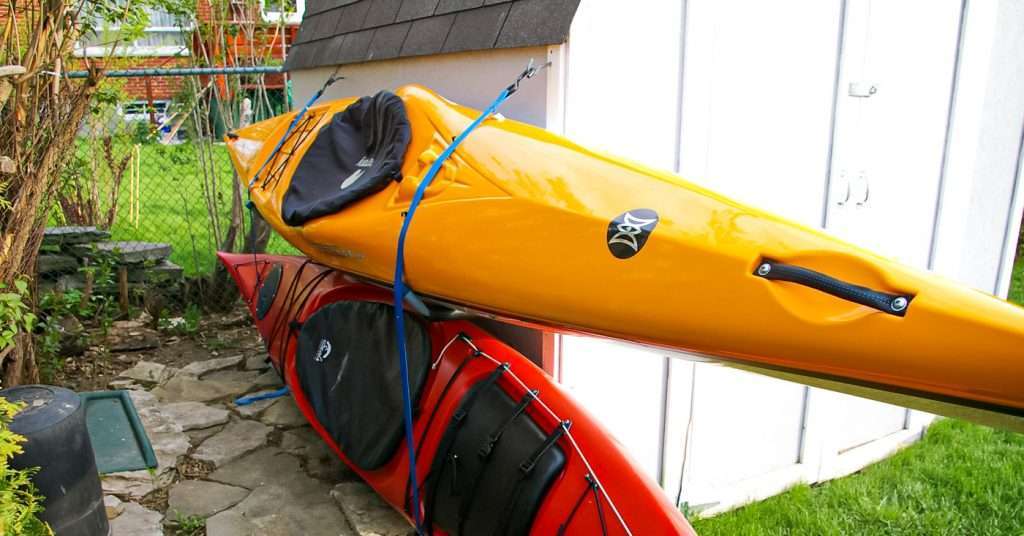Kayak storage isn’t often given much thought, but doing it improperly can lead to permanent damage.
Important: When storing your Kayak, do NOT hang your kayak from the bow and stern handles. These handles are designed for carrying the kayak, not for hanging for long periods of time. The plastic will slowly stretch over time and possibly even eventually fail which will create a hole. When storing your kayak, it is important to be sure that it is well supported.
Storing your Kayak on the ground or on a rack
One technique for storing your kayak is by putting it upside down and resting on its two crossbars. The rails of the kayak are very stiff and can support the weight easily. Padded crossbars will reduce the chance of any scratches or marks on the rails. If you must store it right side up, use cradles or something that is shaped to the contour of the hull. If the kayak is resting right side up with little to no support, the entire weight of the kayak may rest on one point on the bottom and possibly cause a flat area to develop.
Storing your Kayak with hanging racks or straps
If you plan on hanging your kayak from a ceiling, a minimum of one inch webbed strapping should be used to spread the load of the kayak over more area. Using rope to support it may leave dents in the rails, especially in the heavier kayaks. Best if stored upside down with the strap loads on the stiff cockpit rails.
Removing dents after improperly storing your Kayak
If you do see a dent or flat area from improper storage, you can remove it fairly easily. For minor dents, put the kayak in the sun with the dent up. The plastic will soften slightly and the plastic will return to its original shape. For more severe dents, pour near boiling hot water over a towel on the dent and pressurize the hull. The air pressure will push on the softened plastic, returning it to its original shape. A great way to put air pressure in your hull is to direct a shop vacs exhaust flow into the opened drain plug. Do not force more than a pound or two of pressure into the hull without the possibility of the pressure easily escaping. Pressure in the hull can cause damage.

